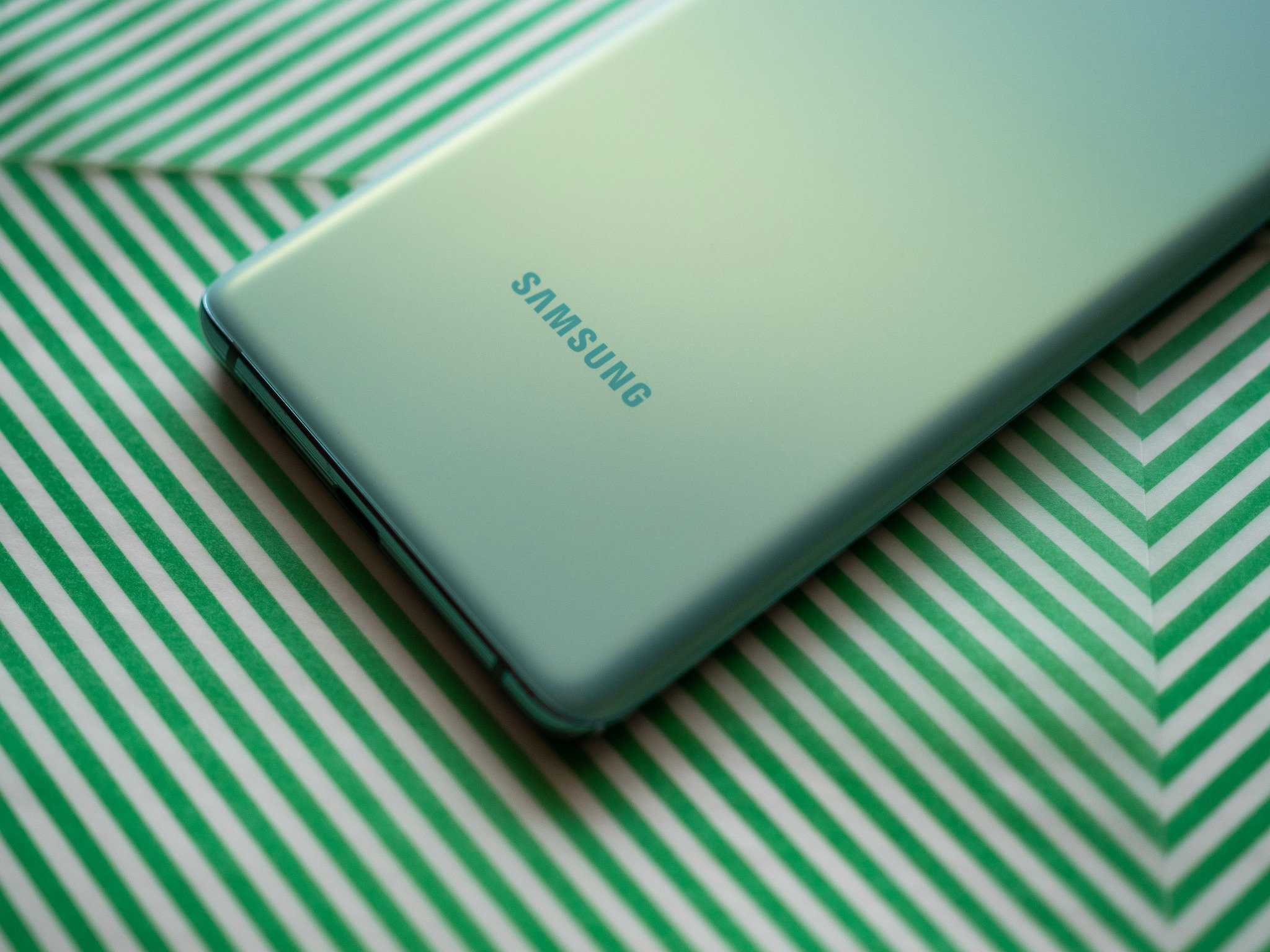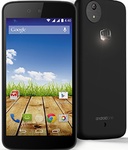Samsung vs Spigen - How do these S Pen cases stack up for the Galaxy S21 Ultra - Android
When the Galaxy S21 Ultra was announced, there was much fanfare to be had about the inclusion of S Pen support. This marks the first time a Samsung smartphone other than the Galaxy Note is able to make use of an S Pen. To commemorate the event, Samsung announced two new S Pen’s, along with ...
The post Samsung vs Spigen: How do these S Pen cases stack up for the Galaxy S21 Ultra? first appeared on Phandroid.
When the Galaxy S21 Ultra was announced, there was much fanfare to be had about the inclusion of S Pen support. This marks the first time a Samsung smartphone other than the Galaxy Note is able to make use of an S Pen. To commemorate the event, Samsung announced two new S Pen’s, along with a new S Pen Case. The reason for needing the case is because using an S Pen with the S21 Ultra is optional, meaning that, unlike the Galaxy Note, there’s no dedicated slot for it built into the phone.
So if you want to use an S Pen with your Galaxy S21 Ultra, you’re going to want to make sure you grab a case to go along with it. Currently, Samsung is selling the S Pen separately, but that doesn’t really do you any good if you are forgetful as you could end up leaving the stylus somewhere, or worse, it could be broken accidentally.
Along with the new S Pen, Samsung actually introduced two new cases that have a side-slot for the S Pen built-in. But as is the case with every new phone and accessory, this opens the door for third-party case-makers to get in on the fun. Spigen did just that with its Liquid Air P case.
- Best Samsung Galaxy S21 Cases
- Samsung Galaxy S21 Ultra Review: Finally living up to its name
- First things to do with your Galaxy S21 and S21+
Samsung S Pen Case
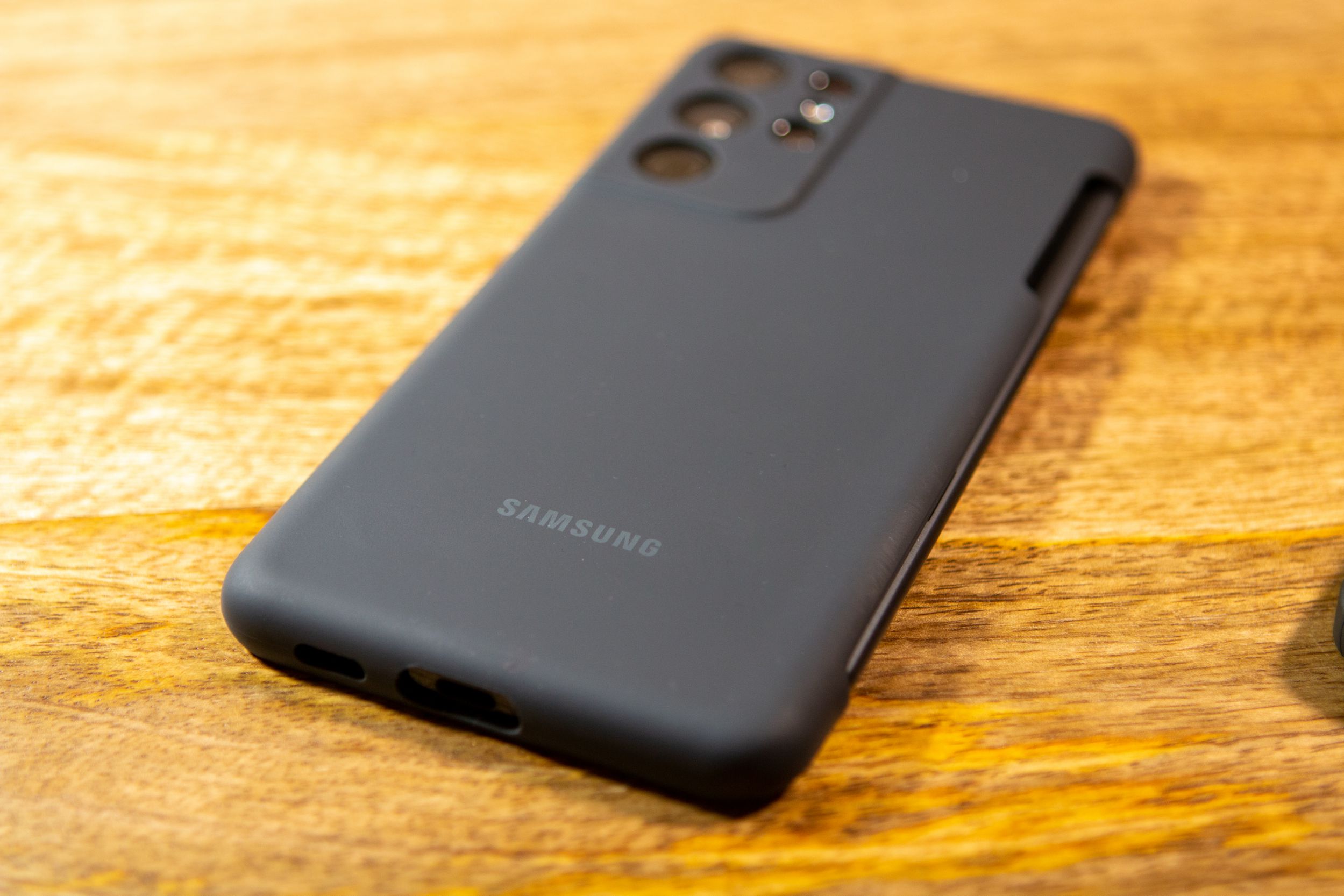
You might be taken aback by the price of the S Pen case at first glance, but the reason for the higher price is because Samsung includes an S Pen in the packaging. This removes the need to find and purchase the stylus separately, giving you everything you need in the box. The company even includes a few extra S Pen tips, along with a removal tool for when it’s time to swap out the tip.
The case itself isn’t all that glamorous, as it’s essentially the same as the Samsung Silicone Case, albeit a bit wider to accommodate the S Pen. The flexibility of using silicone makes it so that you can insert the S Pen in different orientations without needing to fiddle around with trying to holster it the “right” way.
But what if you have an older S Pen hanging around from a Galaxy Note device from days past? Well truthfully, you’re going to be out of luck. Those older S Pen’s are just too small and thin to be safely housed in Samsung’s new case, as it’s been specifically designed for the all-new S Pen which resembles the included option on the Galaxy Tab S7 or S7 Plus.
As for the case material itself, there’s a hard polycarbonate backplate in the inside of the case, which adds the necessary rigidity to make this more than just your standard, run-of-the-mill silicone case. But for some, using the silicone material around the rest of the case could prove frustrating. Notably, the silicone around the charging port and bottom-firing speaker is rather flimsy. We haven’t had the issue ourselves yet, but it seems that it won’t really take much for that to get worn out and stretch or simply tear apart.
Just like the standard Silicone case for the S21 Ultra, this case is also a bit slippery to the touch. And while that improves over time as the case gets worn out a bit more from use, it may not be something you really want to worry about. So we would recommend throwing a PopSocket on just to help with the slipperiness and the added bulk of the S Pen housing.
Spigen Liquid Air P Case
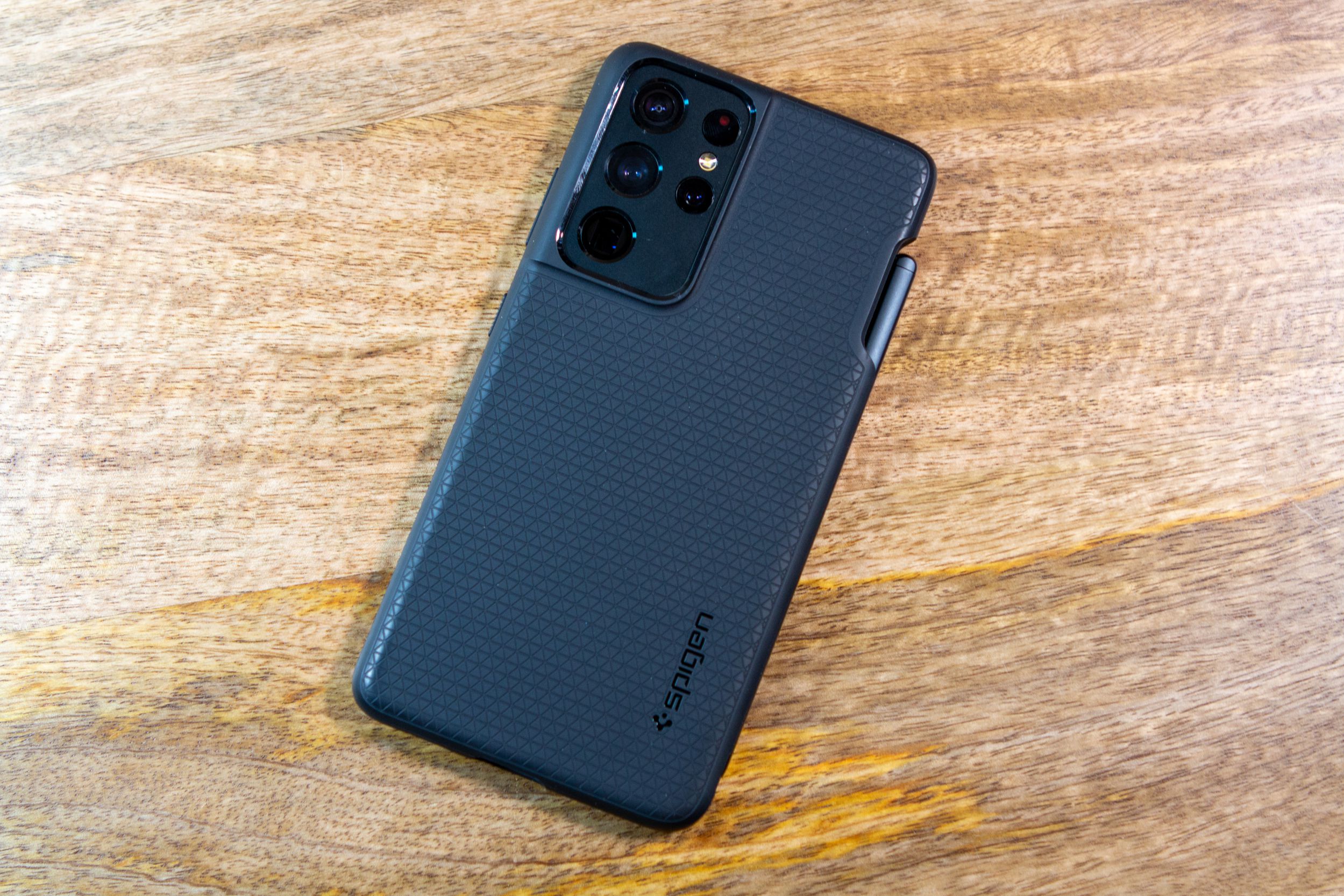
We are expecting more case makers to jump on the S Pen Case train in the coming months, but Spigen was the first to hit the scene with its Liquid Air P case. Since Spigen already makes some of the best Galaxy S21 Ultra cases, this was a no-brainer when the company reached out to check this one out.
As the name suggests, this is just a modified version of the standard Liquid Air case that has been available for a multitude of devices over the years. There is a textured and matte finish on the back to prevent fingerprints from showing up, along with adding some extra grip to the case so your phone doesn’t slip out. The right side of the case has a textured pattern that is also designed to help with grip, while you’ll find the S Pen holster on the left side of the case.
Inside, Spigen’s tried-and-true spiderweb pattern can be found, which is the key to all of the company’s cases offering some of the best shock absorption in the crowd. Unlike Samsung’s case the silicone material is a bit more rugged, durable, and thicker which means that there’s less of a chance for the silicone around the charging port to wear out or tear. Additionally, Spigen added some texture to the power button, along with raising up the volume buttons a bit more so you can press them without having to actually look to see where they are.
The only other downside to this case is that you won’t actually get an S Pen in the box. You’ll still need to grab one from Samsung or Amazon, but if you happened to get in on the pre-orders then you may already have one at your disposal. Oh, and if you have an S Pen from an older Note device, you’re out of luck here too. You can slot the S Pen into the holster, but tip the case to the side, and the S Pen rolls right out. It makes sense considering this case was designed for the new S Pen, but it’s still a bit frustrating.
Samsung vs Spigen: Which is our favorite?
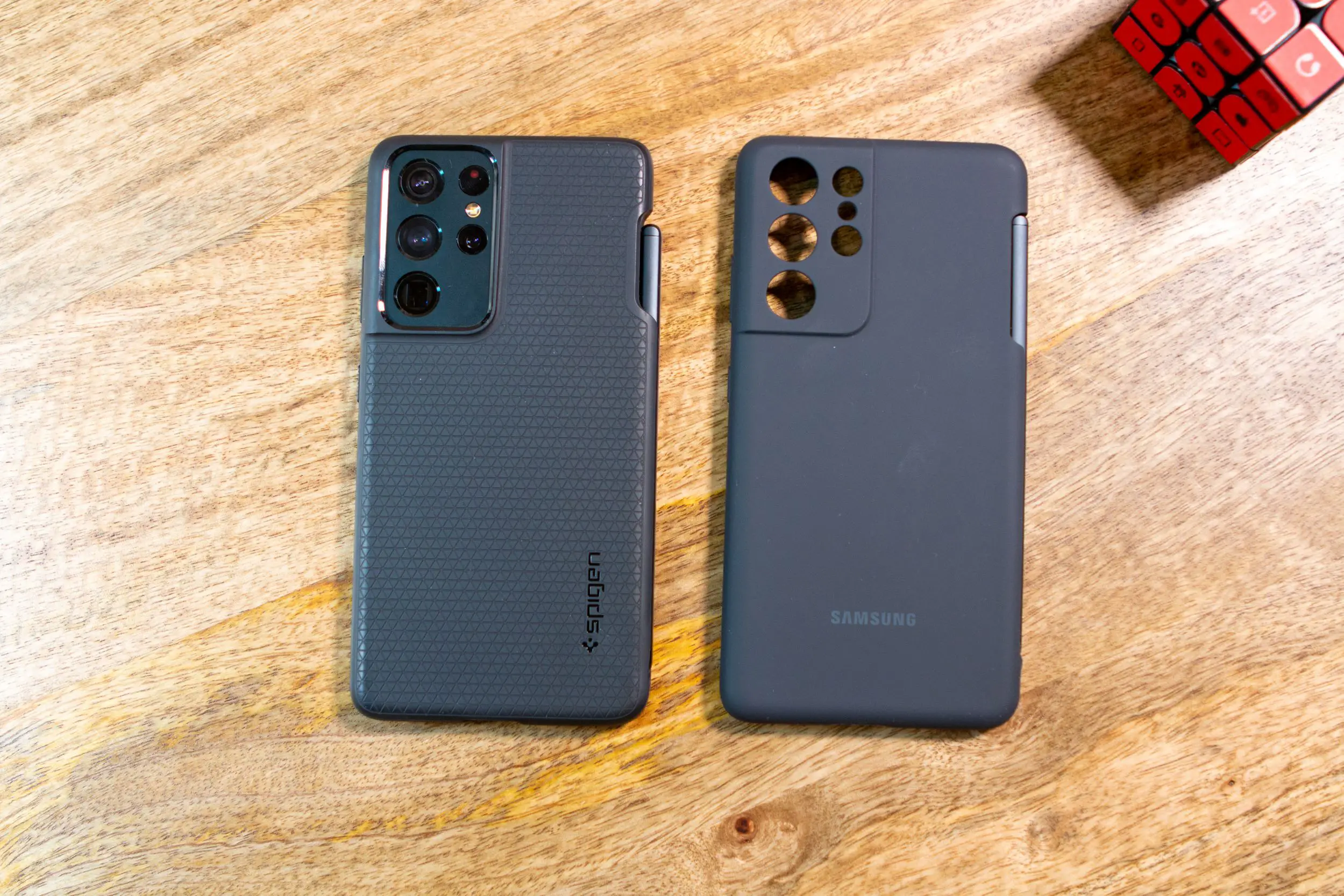
Truth be told, there really aren’t many negative things to say about Spigen’s case, which should really come as no surprise. The case is cheaper, but the reality is that it feels much more durable than that of Samsung’s own S Pen case. The traditional look and feel of a Spigen Liquid Air case hits the mark quite nicely here, while adding just a bit more width to accommodate the S Pen.
Samsung’s S Pen Case isn’t bad, by any means. It’s just that the silicone material is too slippery for our liking, and we are concerned about the long-term durability of the material around the charging port. It seems that it really won’t take much for that material to tear or wear out, leaving an awkward excess amount of silicone and taking away from the looks of the case. But Samsung makes up for the “meh” case quality by including an S Pen and replacement tips in the box. So kudos to Samsung to not making us purchase everything separately.
Here’s the thing though. You can spend $20 on the Spigen Liquid Air P, and then another $40 on the Galaxy S21 Ultra’s new S Pen, and you’ll still be saving around $10 (before tax) compared to Samsung’s case. So it’s a no-brainer, right? Let us know what you think in the comments below.
The post Samsung vs Spigen: How do these S Pen cases stack up for the Galaxy S21 Ultra? first appeared on Phandroid.
26/03/2021 05:03 PM
Here's what you need to know about OnePlus' Warp Charge 65T and 50 Wireless
26/03/2021 10:24 AM
Android TV finally gets 1080p but no 4K on Hulu
26/03/2021 04:34 PM
Access more than 2,400 hours of IT training for just $199
26/03/2021 07:00 PM
The Snapdragon-powered Samsung Galaxy S20 FE 5G is finally coming to India
26/03/2021 11:18 AM
Survival game 'Rust' will hit PS4 and Xbox One on May 21st
26/03/2021 08:32 PM
Google backs one-year-old Indian startup DotPe in $27.5 million fundraise
26/03/2021 10:49 AM
This week's best deals - 20 percent off Samsung's T7 Touch SSD and more
26/03/2021 04:30 PM
- Comics
- HEALTH
- Libraries & Demo
- Sports Games
- Racing
- Cards & Casino
- Media & Video
- Photography
- Transportation
- Arcade & Action
- Brain & Puzzle
- Social
- Communication
- Casual
- Personalization
- Tools
- Medical
- Weather
- Shopping
- Health & Fitness
- Productivity
- Books & Reference
- Finance
- Entertainment
- Business
- Sports
- Music & Audio
- News & Magazines
- Education
- Lifestyle
- Travel & Local



